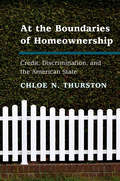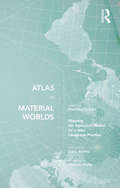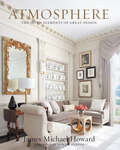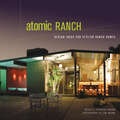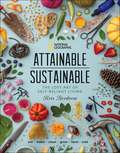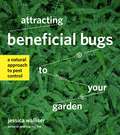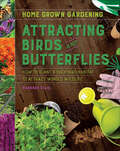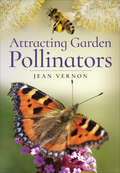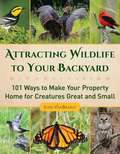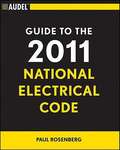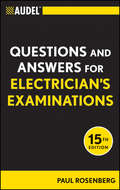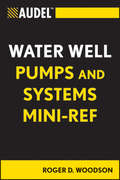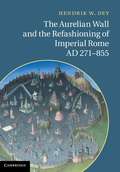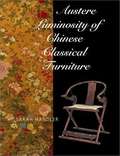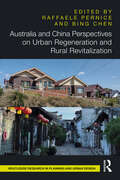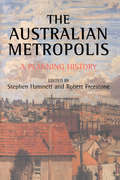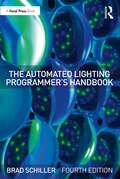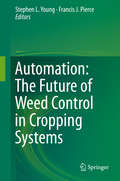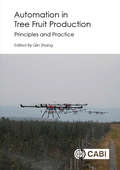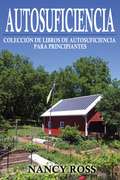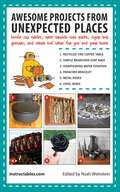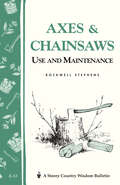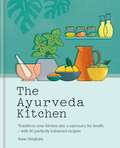- Table View
- List View
At the Boundaries of Homeownership: Credit, Discrimination, And The American State
by Chloe N. ThurstonIn the United States, homeownership is synonymous with economic security and middle-class status. It has played this role in American life for almost a century, and as a result, homeownership's centrality to Americans' economic lives has come to seem natural and inevitable. But this state of affairs did not develop spontaneously or inexorably. On the contrary, it was the product of federal government policies, established during the 1930s and developed over the course of the twentieth century.<P><P> At the Boundaries of Homeownership traces how the government's role in this became submerged from public view and how several groups who were locked out of homeownership came to recognize and reveal the role of the government. Through organizing and activism, these boundary groups transformed laws and private practices governing determinations of credit-worthiness. This book describes the important policy consequences of their achievements and the implications for how we understand American statebuilding.<P> Proposes a new theory about the logic of policy expansion in the public-private welfare state and sheds light on the role of citizen groups and social movements.<P> Identifies and defines 'boundary groups' as a key player in twentieth-century housing policy.<P> Contributes to our understanding of the recent foreclosure crisis and provides historical context to evaluate the casual narratives that emerged in the wake of the crisis implicating low-income and minority borrowers.<P> Read more at http://www.cambridge.org/us/academic/subjects/politics-international-relations/american-government-politics-and-policy/boundaries-homeownership-credit-discrimination-and-american-state#2WZ0e4EhqHmm51Ke.99
Atlas of Material Worlds: Mapping the Agency of Matter for a New Landscape Practice
by Matthew SeibertAtlas of Material Worlds is a highly designed narrative atlas illustrating the agency of nonliving materials with unique, ubiquitous, and often hidden influence on our daily lives. Employing new materialism as a jumping-off point, it examines the increasingly blurry lines between the organic and inorganic, engaging the following questions: What roles do nonliving materials play? Might a closer examination of those roles reveal an undeniable agency we have long overlooked or disregarded? If so, does this material agency change our understanding of the social structures, ecologies, economies, cosmologies, technologies, and landscapes that surround us? And, perhaps most importantly, why does material agency matter? This is the story of the world’s driest nonpolar desert, pink flamingos, and cerulean blue lithium ponds; industrial shipping logistics, pudding-like jiggling substrates, and monuments of mud; galactic bodies, radioactive sheep, and the yellowcake of uranium. Put simply, this book dares readers to see the world anew, from material up. Atlas of Material Worlds offers this new relationship to our host environment in a time of mounting crises—accelerating climate change, ballooning socioeconomic inequality, and rising toxic nationalism—uniquely telling materialist stories for practitioners and students in landscape, architecture, and other built environment disciplines.
Atmosphere: The Seven Elements of Great Design
by James Michael HowardJim Howard creates luxe yet comfortable homes for sophisticated clients around the country. His design work is known for the sort of evocative atmosphere that characterizes the world’s great spaces. “Atmosphere” is the magic of a place, the embodiment of all its power to capture your attention and embrace you—some might call it the “wow factor.” But even as it excites, atmosphere also soothes, offering an overall feeling of well-being and calm. Howard wrote this book to convey all he has learned about crafting atmosphere at home, wherever that home may be, whatever aesthetic it might have. Doing so isn’t just a matter of rules or formulas; it is a science as much as an art, which Jim shares in a dozen captivating chapters.
Atomic Ranch: Design Ideas for Stylish Ranch Homes
by Michelle Gringeri-BrownAtomic Ranch is an in-depth exploration of post-World War II residential architecture in America.Mid-century ranches (1946-1970) range from the decidedly modern gable-roofed Joseph Eichler tracts in the San Francisco Bay area and butterfly wing houses in Palm Springs, Florida, to the unassuming brick or stucco L-shaped ranches and split-levels so common throughout the United States. Authors Michelle Gringeri-Brown and Jim Brown, founders and publishers of the popular quarterly Atomic Ranch magazine, extol the virtues of the tract, split-level, rambler home and its many unique qualities: private front facades, open floor plans, secluded bedroom wings, walls of glass, and an easy-living lifestyle. From updated homes with high-end Italian kitchens, terrazzo floors, and modern furniture to affordable homeowner renovations with eclectic thrift-store furnishings, Atomic Ranch presents twenty-five homes showcasing inspiring examples of stylish living through beautiful color photographs, including before and after shots, design-tip sidebars, and a thorough resource index. Atomic Ranch reveals:Hallmarks of the ranch styleInspiring original ranch homesRanch house transformations and makeoversPreservation of mid-century neighborhoodsAdding personality to a ranch home Yards and landscaping Plus, a helpful resource section and index!
Attainable Sustainable: The Lost Art of Self-Reliant Living
by Kris BordessaPacked with delicious recipes, natural remedies, gardening tips, crafts, and more, this indispensable lifestyle reference from the popular blogger makes earth-friendly living fun.Whether you live in a city, suburb, or the country, this essential guide for the backyard homesteader will help you achieve a homespun life--from starting your own garden and pickling the food you grow to pressing wildflowers, baking sourdough loaves, quilting, raising chickens, and creating your own natural cleaning supplies. In these richly illustrated pages, sustainability-guru Kris Bordessa offers DIY lovers an indispensable home reference for sustainability in the 21st century, with tried-and-true advice, 50 enticing recipes, and step-by-step directions for creating easy, cost-efficient projects that will bring out your inner pioneer. Filled with 340 color photographs, this relatable, comprehensive book contains time honored-wisdom and modern know-how for getting back to basics in a beautiful, accessible package.
Attracting Beneficial Bugs to Your Garden: A Natural Approach to Pest Control
by Jessica WalliserWinner of the American Horticultural Society Book Award Insects are indeed valuable garden companions, especially the assassin bugs, damsel bugs, stink bugs, and other predatory carnivores that eat the insects that dine on your garden. Attracting Beneficial Bugs to Your Garden is a book about bugs and plants, and how to create a garden that benefits from both. In addition to information on companion planting and commercial options for purchasing bugs, there are 19 detailed bug profiles and 39 plant profiles. These profiles include a description, a photograph for identification, an explanation of what they can do to support pest control. Design plans show how to create a border specifically for the natural, sustainable inclusion of beneficial bugs in your garden.
Attracting Birds and Butterflies: How to Plant a Backyard Habitat to Attract Winged Life (Home Grown Gardening)
by Barbara EllisA quick-reference guide to attracting birds and butterflies for gardeners with little experience and time.In the eye of a bird or butterfly, the typical suburban landscape resembles an unfriendly desert. Closely mowed lawns, tightly clipped shrubs, raked-up borders, and deadheaded flowers mean no place to nest, no food to eat, and nowhere to hide. To the humans who live there, this means no bird songs, no colorful butterflies, no dazzling hummingbirds, no night-sparkling fireflies. Creating a garden that welcomes these creatures may seem like a confusing and complicated task, but the principles involved are relatively simple. Essentially, wildlife needs food, water, and shelter, just like we do, and this lavishly illustrated guide shows which plants attract which creatures, and how to plant and care for them.
Attracting Garden Pollinators
by Jean VernonAttracting Garden Pollinators is a friendly, accessible, information packed guide to gardening for and with pollinators. Pollinators are in trouble, but our gardens can help. Gardens represent a vast, varied ‘nature reserve’ packed with plants rich in nectar and pollen to sustain these delicate creatures. This book explores the role that pollinators play and how gardeners and people with gardens can do something to help attract and support them. From butterflies (and their caterpillars - with host plant information) to surprising pollinators (moths, wasps, beetles flies and hornets) and of course including honeybees, hoverflies and bumblebees, this book will offer an insight into their fragile existence, lifecycles and their vital role in the food chain and the natural cycle. Jean Vernon is the Best-Selling author of The Secret Lives of Garden Bees.
Attracting Wildlife to Your Backyard: 101 Ways to Make Your Property Home for Creatures Great and Small
by Josh VanBrakleMany people think of wildlife as something distant, creatures living in natural forests and remote public preserves. But most wildlife in the United States isn?t found in the distant wild. It lives on our private lands, in our very backyards. Because of this, America?s ten million woodland owners are in fact at the forefront in protecting US wildlife for generations to come. But while most landowners want to help preserve the beauty of the natural environment, most are unsure where to begin. In Attracting Wildlife to Your Backyard, author and landowner Josh VanBrakle provides readers with 101 easy-to-follow activities and practical approaches to help do just that. Some projects include:Installing a bat box Making a food plot Identifying trees that attract wildlife Forming a brush pile Assessing a stream's health Building a pond Learning bird calls Planning a backyard scavenger hunt Complete with stunning wildlife photographs and an appendix of practical resources, Attracting Wildlife to Your Backyard is an essential read for anyone who cares about the environment.
Audel Guide to the 2011 National Electrical Code
by Paul RosenbergThe NEC is updated every 3 years with some of the anticipated changes include new requirements to sections while some of the changes include entirely new articles. Some changes are revisions to existing requirements while others are deletions to some existing requirements. As with the last edition of this book the author will use an icon or other graphical feature to highlight all changes to the 2011 code from the 2008 version. The book is considered an easy reference tool for those individuals on the job in need of a handy reference without the bulk and formality of the code itself. Significant changes to wiring and protection sections as well as new coverae of hybrid electric vehicles and small wind turbine power generators are being made. As always there will be numerous small changes made throughout the book. In short if a change has been made to the code it will be covered in this book in an easy to read instructional way.
Audel Questions and Answers for Electrician's Examinations
by Paul RosenbergAn essential resource for passing electrician's examinationsTo pass your state and local licensing exams, you need knowledge and confidence. This comprehensive review guide gives you plenty of both. It's packed with sample questions to help you focus your efforts, review material on all aspects of the 2011 National Electrical Code (NEC), the lowdown on business competency requirements, and tips for studying and test-taking that will help you conquer anxiety ahead.Learn the definitions, specifications, and regulations of the 2011 NEC Acquire test-taking skills with examples of questions and answers that are similar to the ones on the license testsBrush up on taxes, unemployment, workers compensation, OSHA, lien laws, and other aspects of the business competency examBoost your confidence with studying and test-taking tipsA reliable and trusted resource for many decades, this newest edition delivers all of the vital content electricians need to made the grade and advance their careers.
Audel Water Well Pumps and Systems Mini-Ref
by R. Dodge WoodsonIntroducing an Audel "Mini-Ref" for tradespeople working on water well pumps and pumping systems Water well pumps are used everywhere, with installations numbering in the millions. It's hard to believe that no one has written a small field book that covers these pieces of equipment. Finally, here's a great handy guide is for anyone who needs to know how these pumps work, how to troubleshoot problems unique to this type of piping system, and how to make common repairs for both above ground and submersible pumps. It contains vital and specific references applicable to a wide range of professions, including plumbers, well drillers, electricians, pump suppliers, pump retailers, plumbing supply companies, well system suppliers, and more. Focuses on the must-have information to trouble-shoot, solve problems, and make water well pump repairs Clears up the mysteries of jet pumps, two pipe systems, pressure settings, and accumulator sizing Illustrations and data formatted for quick look up and understanding Discusses pumping system issues concerning municipalities, golf courses, maintenance professionals, big-box stores, irrigation installers, irrigation suppliers, and farm suppliers For tradespeople looking to keep their heads above water, this reliable and trusted resource delivers all of the vital content they need to keep water pumping systems functioning properly.
The Aurelian Wall and the Refashioning of Imperial Rome, AD 271–855
by Hendrik W. DeyThis book explores the relationship between the city of Rome and the Aurelian Wall during the six centuries following its construction in the 270s AD, a period when the city changed and contracted almost beyond recognition, as it evolved from imperial capital into the spiritual center of Western Christendom. The Wall became the single most prominent feature in the urban landscape, a dominating presence which came bodily to incarnate the political, legal, administrative and religious boundaries of urbs Roma, even as it reshaped both the physical contours of the city as a whole and the mental geographies of 'Rome' that prevailed at home and throughout the known world. With the passage of time, the circuit took on a life of its own as the embodiment of Rome's past greatness, a cultural and architectural legacy that dwarfed the quotidian realities of the post-imperial city as much as it shaped them.
Austere Luminosity of Chinese Classical Furniture
by Sarah HandlerAustere Luminosity will be the book on Chinese classical furniture. A sumptuous coffee table book with impeccable scholarship, Sarah Handler's expertise will serve as the primary resource for scholars and collectors of Chinese classical furniture for years.
Australia and China Perspectives on Urban Regeneration and Rural Revitalization (Routledge Research in Planning and Urban Design)
by Raffaele Pernice Bing ChenThis edited volume reviews important contemporary issues through relevant case studies and research in China and Australia, such as the challenges posed by climate change, the development of eco-urban design, research on sustainable habitats and the relationship between ecology, green architecture and city regeneration, as well as, in general, the future of the city in the new millennium.The authors represent a broad selection of international experts, young scholars and established academics who discuss themes related to urban–rural destruction and economic and spatial regeneration techniques, the sustainable reconversion of natural landscapes and eco-urban design in the context of the current evolution of architectural and urbanism practice. The book aims to explain the conditions in which the contemporary debate about urban regeneration and rural revitalisation has developed in Australia and China, presented by different theoretical and methodological perspectives. It also provides a multifaceted and critical analysis of relevant case studies and urban experiences in Australia and China, focusing on environmental disruption, resized urban interventions and the need for more efficient and sustainable forms of regeneration and urban renewal practice in urban–rural contexts.This book will be an invaluable resource for architects, planners, architectural and urban historians, geographers, and scholars interested in modern Australian and Chinese architecture and urbanism.
Australian Metropolis: A Planning History (Planning, History and Environment Series #Vol. 25)
by Hamnett Stephen Freestone RobertThe Australian Metropolis splendidly fills a huge gap in the literature on Australian cities. It is the definitive account of the history of Australian cities and the crucial role which planning has played in their genesis and growth. Spanning two centuries from the very beginning until the present day, it will instantly become a standard work ' Professor Sir Peter Hall, author of Cities in Civilisation..The Australian Metropolis provides a single-volume introduction to the development of urban planning. It fills the need for a convenient, initial resource for anyone interested in the broad evolutionary sweep of modern planning. By setting the evolution of Australian planning within its broader societal context, The Australian Metropolis presents a balanced appraisal of the positive, negative and ambivalent legacies resulting from attempts to plan Australia's major cities. This book is the winner of two Royal Australian Planning Institute Awards for Planning Excellence in 2000/2001, including the New South Wales' Division Prize for Planning Scholarship in February 2001.
Authentic Color Schemes for Victorian Houses: Comstock's Modern House Painting, 1883
by E. K. Rossiter F. A. WrightWhen the authors, a pair of respected architects, first published this beautiful book in the late Victorian era, they meant it as a wakeup call to the forward-looking homeowners of the time — inviting them to eschew "the old puritanical hatred of color, which found its natural outcome in white houses with green blinds" and join in the revolutionary trend toward "advanced notions, in which the more positive colors find a chance of expression." The book helped homeowners to attain this goal through its presentation of full-color illustrations of attractive, up-to-date color schemes for houses, with special attention given to the refined lines of Queen Anne-style homes.The heart of the book is the section of 20 exquisite color plates — each reproducing a flawlessly executed architectural drawing that shows the color possibilities for a specific house, and each accompanied by an extensive written description of the colors to be used for exterior walls and trim. An informative introductory section gives a clear explanation of how to mix primary and secondary colors to achieve such popular, mellow tones of the period as olive, russet, citrine, buff, plum, and sage. This authentic source of inspiration and suggestions will be prized by restorationists, architects, home-builders, and lovers of Victoriana.
The Automated Lighting Programmer's Handbook
by Brad SchillerThe Automated Lighting Programmer’s Handbook, fourth edition, provides respected and clear coverage of the process of programming automated lighting fixtures from basic principles to advanced production preparations. This guide helps lighting programmers and designers with the creative and operational challenges they face in their rapidly evolving industry. Concepts, procedures, and guidelines to ensure a successful production are covered as well as troubleshooting, much needed information on workflows, technology, work relationships, console networking, digital lighting, and more. Chapters are peppered with advice and war stories from some of the most prominent lighting designers and programmers of today. The fourth edition is the most comprehensive yet: added topics include programming structure, advanced recording/editing, cloning, multi-cell fixtures, safety routines, GDTF, and pre-visualization. Deep explorations into the work of programmers from Earlybird and Broadway provide readers with timely real-world scenarios and advice. The information in this book is perfect for anyone interested in the programming of automated lighting in any market. From the beginner to the expert, the methodologies within provide simple, yet powerful tools to assist with any production. Lighting designers also will gain important knowledge about the procedures and concepts utilized by lighting programmers.
Automation: The Future Of Weed Control In Cropping Systems
by Stephen L. Young Francis J. PierceTechnology is rapidly advancing in all areas of society, including agriculture. In both conventional and organic systems, there is a need to apply technology beyond our current approach to improve the efficiency and economics of management. Weeds, in particular, have been part of cropping systems for centuries often being ranked as the number one production cost. Now, public demand for a sustainably grown product has created economic incentives for producers to improve their practices, yet the development of advanced weed control tools beyond biotech has lagged behind. An opportunity has been created for engineers and weed scientists to pool their knowledge and work together to 'fill the gap' in managing weeds in crops. Never before has there been such pressure to produce more with less in order to sustain our economies and environments. This book is the first to provide a radically new approach to weed management that could change cropping systems both now and in the future.
Automation in Tree Fruit Production: Principles and Practice
by Qin ZhangAutomation in agriculture is made possible by the integration of advanced agricultural technology and precision agriculture management. This book, uniquely, will focus on applications of automation to the important industry of tree fruit production. Written by experts in agricultural automation technology from around the world, chapters in this book cover topics such as automated tree fruit production systems, plant stress sensing and high-throughput phenotyping in precision horticulture, the economics of automation in tree fruit production, light interception sensing systems for canopy management, precision irrigation and water management, precision technologies for pest and disease management, opportunities for the application of robotics in tree fruit production, and the mechanical harvesting and handling of fruit crops. The book is a representative, concise overview of the variety of technologies currently being applied to tree fruit crops around the world and the challenges faced by engineers and farmers that these technologies raise. It is aimed at researchers and graduate students of agriculture systems, agricultural and biological engineering, crop and soil sciences, horticulture, precision agriculture, and other relevant disciplines. It will also be of use to agriculture consultants, engineers, and other professionals such as agricultural equipment manufacturers and management professionals who use precision agriculture technologies. Key Features: - Takes a systematic approach to how to apply precision and automation technologies to fruit production. - Combines the disciplines of economics, horticulture, and engineering. - Illustrated by case studies throughout describing actual applications of automation technology.
Autosuficiencia: Colección de Libros de Autosuficiencia para Principiantes
by Nancy Ross Karla Cabello RodríguezEl movimiento de las mini-viviendas ha conquistador a todo el mundo. Tras la muerte de la industria de casas actual, con cual ha sido increíblemente difícil lidiar, con todos esos precios altos y las casas que son demasiado grandes para poder cuidar de ellas, y el hecho de que la mayoría de las personas han dañado el medio ambiente gracias a su elección de hogares, mucha gente está comenzando a ver una nueva solución. Esa solución son las mini-viviendas. Las mini-viviendas son una idea maravillosa para empezar a hacer algunos cambios. Estas casas tienen 37 metros cuadrados, el espacio suficiente para usted y un par de personas más. A comparación de los hogares Americanos con alrededor de 600 metros cuadrados, las mini-viviendas son un poco más pequeñas de lo que la gente está acostumbrada. Pero la idea es solamente usar el especio realmente necesario, ahorrando dinero en el hogar e incluso en los servicios. Mudarse a una mini-vivienda no es siempre lo más sencillo. Estamos acostumbrados a usar mucho espacio y muchos de nosotros no sabríamos como vivir en un espacio tan limitado. Pero con la ayuda de esta guía, usted aprenderá lo increíble que es el movimiento de mini-viviendas y algunos de los mejores consejos que puede seguir para que el vivir en uno de estos tipos de hogar sea lo más sencillo posible. Ya sea que usted esté apenas comenzando en este viaje e investigando cómo funcionan las mini-viviendas, o quizás ya ha recorrido este camino por algún tiempo y está listo para hacerlo, esta guía le proporcionará toda la información que necesitará para comenzar con el pie derecho. ¡Lea esta guía y obtenga toda la información que necesita para empezar a vivir el movimiento de las mini-viviendas!
Awesome Projects from Unexpected Places: Bottle Cap Tables, Tree Branch Coat Racks, Cigar Box Guitars, and Other Cool Ideas for You and Your Home
by Instructables. Com Noah WeinsteinAwesome Projects from Unexpected Places features more than thirty projects designed by the users of instructables.com. These users have repurposed and reused everyday items they've found around their homes, in their backyards, or even in local junkyards to create unique furnishings and decorations for their homes and meaningful gifts for others. Equipped with the vision to not only see the latent potential and beauty in common items, but also the skills necessary to transform those objects into creative and new applications, these projects are at the core of the maker movement and can inspire us all. Readers of Awesome Projects from Unexpected Places will learn how to construct: Bottle cap tables; Concrete lamps; 3D string art; Sand fire gardens; Screw-nut and wooden rings; Paracord bracelets; Cigar box guitars; Wooden beer mugs; Test tube spice racks; Metal roses; And more!
Axes & Chainsaws: Use and Maintenance / A Storey Country Wisdom Bulletin A-13 (Storey Country Wisdom Bulletin Ser.)
by Rockwell StephensSince 1973, Storey's Country Wisdom Bulletins have offered practical, hands-on instructions designed to help readers master dozens of country living skills quickly and easily. There are now more than 170 titles in this series, and their remarkable popularity reflects the common desire of country and city dwellers alike to cultivate personal independence in everyday life.
The Ayurveda Kitchen: Transform your kitchen into a sanctuary for health - with 80 perfectly balanced recipes
by Anne Heigham'Anne Heigham has brought the ancient, timeless wisdom of Ayurveda into these energizing recipes that nourish the doshas.Anne Heigham has brought the ancient, timeless wisdom of Ayurveda into these energizing recipes that nourish the doshas.' Vasant Lad, BAM&S, MASc, Ayurvedic Physician'Let food be your first medicine and the kitchen your first pharmacy.' Taittiriya UpanishadBy using the principles of Ayurveda, which is one of the fastest growing health practices, and a little vision, transform your kitchen into a space that nourishes your body, mind and soul.With this beautiful introduction to Ayurveda, learn how to use your kitchen as a natural pharmacy to improve your health and prevent imbalances with key Ayurvedic ingredients, 80 perfectly balanced vegetarian recipes and simple home remedies. Ayurveda aims to bring health back into balance, nourishing agni (metabolic fire) and prana (life force), while clearing ama (metabolic waste or 'sludge'). Just imagine fresh, vibrant herbs growing, seeds sprouting and pickles fermenting. Discover how to perform a kitchen sadhana at the beginning of each season, mix your own spice blends and balance recipes according to what you need and how you feel.Sections include:Introduction to AyurvedaAyurveda and seasonal eatingThe kitchen pharmacyRecipes from the Ayurveda kitchenRecipes include:Sweet potato and pea tortillaNourishing spiced pumpkin soupRefuelling rice and red lentil ballsCarrot and beetroot celebration cake
The Ayurveda Kitchen: Transform your kitchen into a sanctuary for health - with 80 perfectly balanced recipes
by Anne Heigham'Anne Heigham has brought the ancient, timeless wisdom of Ayurveda into these energizing recipes that nourish the doshas.Anne Heigham has brought the ancient, timeless wisdom of Ayurveda into these energizing recipes that nourish the doshas.' Vasant Lad, BAM&S, MASc, Ayurvedic Physician'Let food be your first medicine and the kitchen your first pharmacy.' Taittiriya UpanishadBy using the principles of Ayurveda, which is one of the fastest growing health practices, and a little vision, transform your kitchen into a space that nourishes your body, mind and soul.With this beautiful introduction to Ayurveda, learn how to use your kitchen as a natural pharmacy to improve your health and prevent imbalances with key Ayurvedic ingredients, 80 perfectly balanced vegetarian recipes and simple home remedies. Ayurveda aims to bring health back into balance, nourishing agni (metabolic fire) and prana (life force), while clearing ama (metabolic waste or 'sludge'). Just imagine fresh, vibrant herbs growing, seeds sprouting and pickles fermenting. Discover how to perform a kitchen sadhana at the beginning of each season, mix your own spice blends and balance recipes according to what you need and how you feel.Sections include:Introduction to AyurvedaAyurveda and seasonal eatingThe kitchen pharmacyRecipes from the Ayurveda kitchenRecipes include:Sweet potato and pea tortillaNourishing spiced pumpkin soupRefuelling rice and red lentil ballsCarrot and beetroot celebration cake
